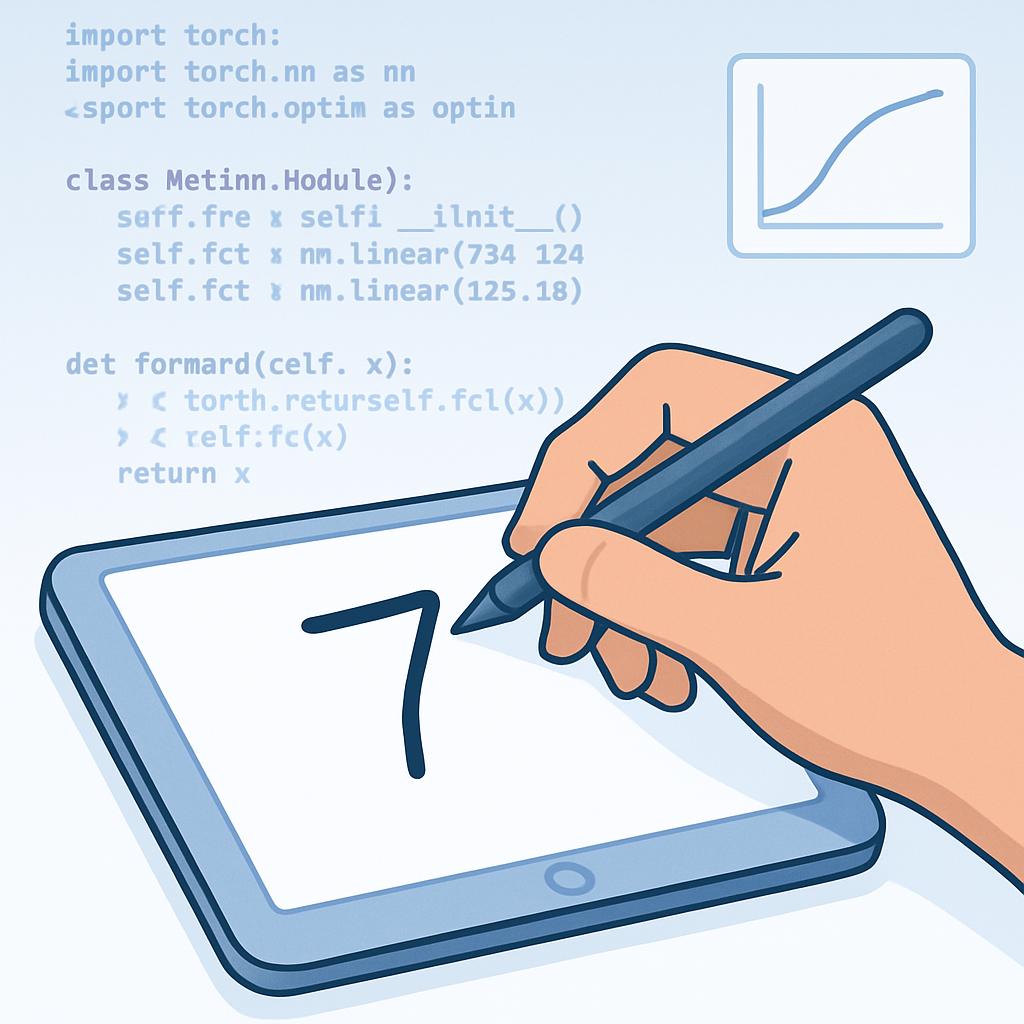Artificial Intelligence (AI) is transforming industries, from healthcare to finance (IBM), and learning how to build an AI model is a valuable skill. If you’re new to AI, Python is the perfect language to start with due to its simplicity and powerful libraries like NumPy and scikit-learn.
In this guide, we’ll walk through building a simple AI model—a handwritten digit classifier using the classic MNIST dataset—with Python.
Prerequisites
Before we begin, ensure you have:
Basic knowledge of Python (Python 3 tutorial)
Python installed (3.6 or later)
Libraries:
scikit-learn,numpy,matplotlib
Install the required packages using:
pip install numpy matplotlib scikit-learn
Step 1: Import Necessary Libraries
First, let’s import the essential libraries:
import numpy as np
import matplotlib.pyplot as plt
from sklearn import datasets, svm, metrics
from sklearn.model_selection import train_test_split
Step 2: Load the Dataset
We’ll use the MNIST dataset, a benchmark dataset in machine learning. For larger-scale projects, consider the TensorFlow MNIST loader.
digits = datasets.load_digits() # Built-in scikit-learn dataset
Visualize a sample digit:
plt.figure(figsize=(4, 4))
plt.imshow(digits.images[0], cmap=plt.cm.gray_r)
plt.title(f"Label: {digits.target[0]}")
plt.show()

Step 3: Prepare the Data
Learn more about data preprocessing in the scikit-learn docs.
# Flatten the images
n_samples = len(digits.images)
X = digits.images.reshape((n_samples, -1)) # Each image is now a 1D array
y = digits.target
# Split into train and test sets (80% train, 20% test)
X_train, X_test, y_train, y_test = train_test_split(X, y, test_size=0.2, random_state=42)
Step 4: Train the AI Model
We use a Support Vector Machine (SVM). For deeper theory, read SVM explained (MIT).
# Create an SVM classifier
model = svm.SVC(gamma=0.001)
# Train the model
model.fit(X_train, y_train)
Step 5: Evaluate the Model
We use a Support Vector Machine (SVM). For deeper theory, read SVM explained (MIT).
# Predict on the test set
y_pred = model.predict(X_test)
# Print classification report
print("Classification Report:\n", metrics.classification_report(y_test, y_pred))
# Display confusion matrix
disp = metrics.ConfusionMatrixDisplay.from_predictions(y_test, y_pred)
disp.figure_.suptitle("Confusion Matrix")
plt.show()
Output:
Classification Report:
precision recall f1-score support
0 1.00 1.00 1.00 33
1 1.00 1.00 1.00 28
2 1.00 1.00 1.00 33
3 1.00 0.97 0.99 34
4 1.00 1.00 1.00 46
5 0.98 0.98 0.98 47
6 1.00 1.00 1.00 35
7 0.97 1.00 0.99 34
8 1.00 0.97 0.98 30
9 0.97 0.97 0.97 40
accuracy 0.99 360
macro avg 0.99 0.99 0.99 360
weighted avg 0.99 0.99 0.99 360 Our model achieves 99% accuracy!
Step 6: Make Predictions
# Predict a single sample (e.g., the first test image)
sample_index = 0
predicted = model.predict(X_test[sample_index].reshape(1, -1))
print(f"Predicted: {predicted[0]}, Actual: {y_test[sample_index]}")
Conclusion
Congratulations! You’ve built your first AI model in Python. Here’s what we covered:
Loading and exploring a dataset (MNIST digits).
Preprocessing data for machine learning.
Training an SVM classifier.
Evaluating model performance.
🔍 What’s Next?
Experiment with other models (e.g., Random Forest, Neural Networks).
Try different datasets (e.g., CIFAR-10 for image classification).
Learn about deep learning with TensorFlow or PyTorch.
AI is a vast field, but starting with simple models like this helps build a strong foundation. Happy coding!

